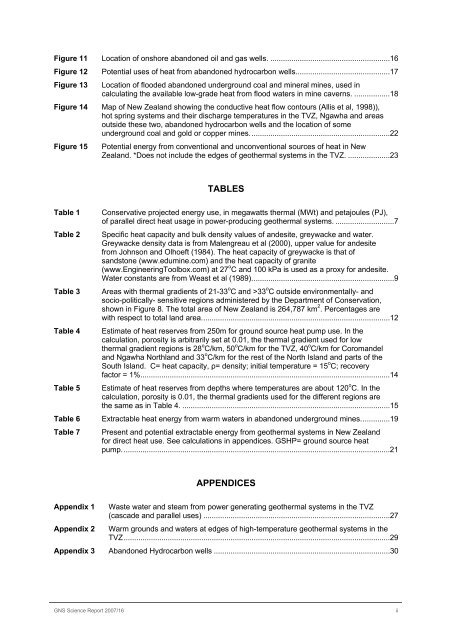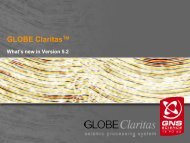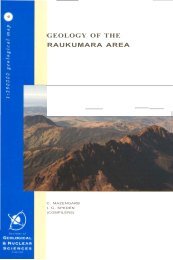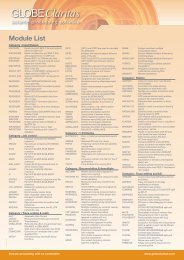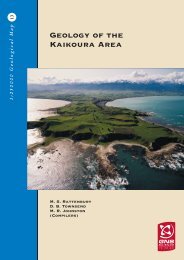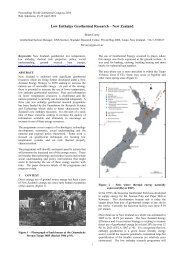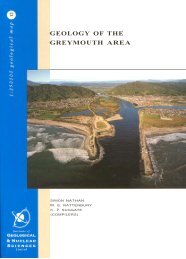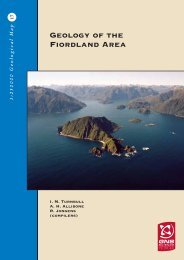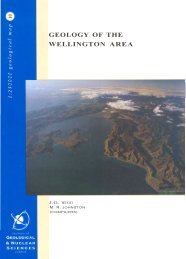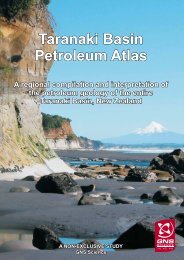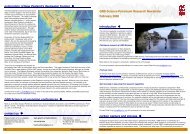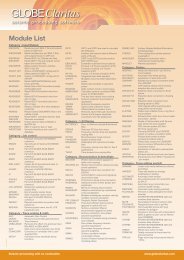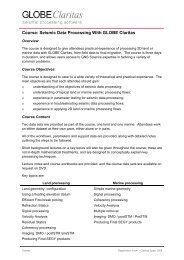sources of energy for geothermal direct heat use - GNS Science
sources of energy for geothermal direct heat use - GNS Science
sources of energy for geothermal direct heat use - GNS Science
- No tags were found...
Create successful ePaper yourself
Turn your PDF publications into a flip-book with our unique Google optimized e-Paper software.
Figure 11 Location <strong>of</strong> onshore abandoned oil and gas wells. .........................................................16Figure 12Figure 13Potential <strong>use</strong>s <strong>of</strong> <strong>heat</strong> from abandoned hydrocarbon wells.............................................17Location <strong>of</strong> flooded abandoned underground coal and mineral mines, <strong>use</strong>d incalculating the available low-grade <strong>heat</strong> from flood waters in mine caverns. .................18Figure 14 Map <strong>of</strong> New Zealand showing the conductive <strong>heat</strong> flow contours (Allis et al, 1998)),hot spring systems and their discharge temperatures in the TVZ, Ngawha and areasoutside these two, abandoned hydrocarbon wells and the location <strong>of</strong> someunderground coal and gold or copper mines...................................................................22Figure 15Potential <strong>energy</strong> from conventional and unconventional <strong>sources</strong> <strong>of</strong> <strong>heat</strong> in NewZealand. *Does not include the edges <strong>of</strong> <strong>geothermal</strong> systems in the TVZ. ....................23TABLESTable 1Table 2Table 3Table 4Table 5Table 6Table 7Conservative projected <strong>energy</strong> <strong>use</strong>, in megawatts thermal (MWt) and petajoules (PJ),<strong>of</strong> parallel <strong>direct</strong> <strong>heat</strong> usage in power-producing <strong>geothermal</strong> systems. ............................7Specific <strong>heat</strong> capacity and bulk density values <strong>of</strong> andesite, greywacke and water.Greywacke density data is from Malengreau et al (2000), upper value <strong>for</strong> andesitefrom Johnson and Olhoeft (1984). The <strong>heat</strong> capacity <strong>of</strong> greywacke is that <strong>of</strong>sandstone (www.edumine.com) and the <strong>heat</strong> capacity <strong>of</strong> granite(www.EngineeringToolbox.com) at 27 o C and 100 kPa is <strong>use</strong>d as a proxy <strong>for</strong> andesite.Water constants are from Weast et al (1989)....................................................................9Areas with thermal gradients <strong>of</strong> 21-33 o C and >33 o C outside environmentally- andsocio-politically- sensitive regions administered by the Department <strong>of</strong> Conservation,shown in Figure 8. The total area <strong>of</strong> New Zealand is 264,787 km 2 . Percentages arewith respect to total land area..........................................................................................12Estimate <strong>of</strong> <strong>heat</strong> reserves from 250m <strong>for</strong> ground source <strong>heat</strong> pump <strong>use</strong>. In thecalculation, porosity is arbitrarily set at 0.01, the thermal gradient <strong>use</strong>d <strong>for</strong> lowthermal gradient regions is 28 o C/km, 50 o C/km <strong>for</strong> the TVZ, 40 o C/km <strong>for</strong> Coromandeland Ngawha Northland and 33 o C/km <strong>for</strong> the rest <strong>of</strong> the North Island and parts <strong>of</strong> theSouth Island. C= <strong>heat</strong> capacity, ρ= density; initial temperature = 15 o C; recoveryfactor = 1%.......................................................................................................................14Estimate <strong>of</strong> <strong>heat</strong> reserves from depths where temperatures are about 120 o C. In thecalculation, porosity is 0.01, the thermal gradients <strong>use</strong>d <strong>for</strong> the different regions arethe same as in Table 4. ...................................................................................................15Extractable <strong>heat</strong> <strong>energy</strong> from warm waters in abandoned underground mines..............19Present and potential extractable <strong>energy</strong> from <strong>geothermal</strong> systems in New Zealand<strong>for</strong> <strong>direct</strong> <strong>heat</strong> <strong>use</strong>. See calculations in appendices. GSHP= ground source <strong>heat</strong>pump................................................................................................................................21APPENDICESAppendix 1Appendix 2Waste water and steam from power generating <strong>geothermal</strong> systems in the TVZ(cascade and parallel <strong>use</strong>s) .........................................................................................27Warm grounds and waters at edges <strong>of</strong> high-temperature <strong>geothermal</strong> systems in theTVZ...............................................................................................................................29Appendix 3 Abandoned Hydrocarbon wells ....................................................................................30<strong>GNS</strong> <strong>Science</strong> Report 2007/16ii


